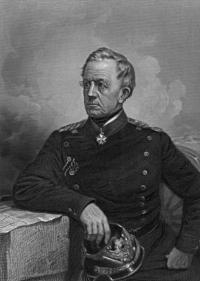Here Come the History Simulations!
16 Mars 2014 - 12:11pm
Editor's note: Please be advised that this is an American history website; not all resources discussed are free.
 David Harms has designed an interactive history simulation website for teachers that encourages problem solving, collaboration, higher order thinking and decision-making. According to Harms, History Simulation engages students by stimulating their attention. It encourages active participation and strategic thinking skills that are centered on improving problem solving skills, creativity and curiosity. These simulations will encourage students to move around the class and become involved rather than sitting and listening to a didactic lesson.
David Harms has designed an interactive history simulation website for teachers that encourages problem solving, collaboration, higher order thinking and decision-making. According to Harms, History Simulation engages students by stimulating their attention. It encourages active participation and strategic thinking skills that are centered on improving problem solving skills, creativity and curiosity. These simulations will encourage students to move around the class and become involved rather than sitting and listening to a didactic lesson.
This website provides practical examples of how to effectively use simulations in your class. Replicating real-life situations, the students must make strategic decisions that demonstrate the cause and consequence of every decision. Students work together to learn the political landscape and physical and geographical environment to better their position in a simulated battlefield. Students also grapple with the impact that their decisions have on the present day and how history continues to evolve and shape our current societies.
These simulations provide students with an activity in order to 'take part' in historical events. However, for students to effectively engage with the simulation they must understand the content knowledge and purpose of why are they actually ‘doing history’ in their classroom. For example, the Civil War simulation requires students to “take the roles of individual states and vote for the candidate that most closely matches the majority of that state's political beliefs. Students will face the same challenges and advantages both the North and South had during the Civil War.” Yet, in order for this simulation to be effective, the students must understand the significance of for example, the act of voting and its consequences, the importance of the term ‘majority’ and lastly, the historical tensions between the North and South. Educators must be sure that their students understand the significance beyond just their actions in the simulations. For example, why is matching the majority of that state's political beliefs important in a nation state and what are the implications of voting or most importantly, which individuals were able to vote during that time period?
As a teacher you cannot rely solely on using these simulations in your classroom. Educators need to ensure that students have the proper foundation of information and knowledge that will make these simulations effective. These simulations are a great secondary resource to engage your students in history once they know the necessary information and content knowledge. For example, the website provides a Teacher Orientation Video on the Civil War simulation of the United States but, makes it clear that the teacher needs to supplement this simulation with teachings of for example, the differences and tensions between the North and South. Yet, as an educator, this indirectly means a lesson or two would have to be dedicated toward teaching students the tensions between the North and South. With the limitations of time not on our side, teachers may not be able to incorporate all the content information to effectively allow students to participate in every simulation that is offered. This would be a great consolidation activity once the unit is complete or as a summative activity. Perhaps students can vote on one year-end simulation with which they can fully engage.
The website contains lesson plans and their specific summaries, as well as simulation maps, student journals and the history simulation rules. If you are a busy teacher, this website will help save some planning time because all resources and links are available for use. Teachers can also access a free trench warfare educational resource that is available on their website. This resource includes teacher instructions, an overview of how to effectively use the simulation, a list of included materials, a detailed list of student instructions, the Western Front map and a battle calculator.
Why compete with technology and social media? You can incorporate technology right into your classroom and engage students at any level. Students will get the most out of history class by actually taking part in it. Your classroom can be transformed and teleported back in time to teach students the importance of history, its causes, consequences and significance to our present! Get involved and get your students involved and remember to bring history to life in your class.
How do you use interactive technology in your history lessons?
Photo: Helmuth Karl Bernhard von Moltke (1800 - 1891), considered the grandfather of modern military simulation, from Wikipedia Commons.
- Se connecter ou créer un compte pour soumettre des commentaires

